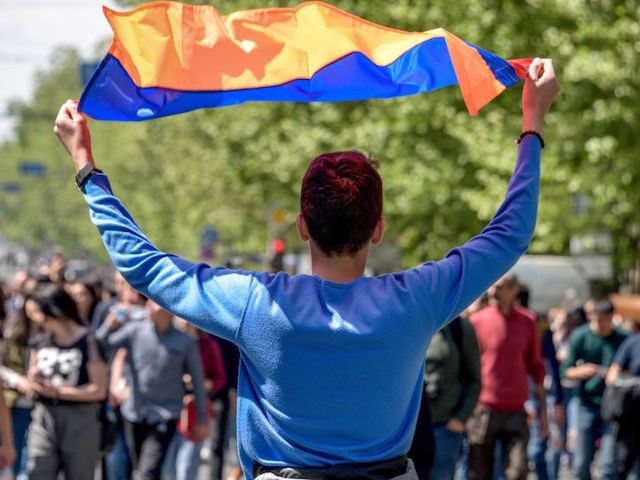Armenian protesters stormed a government building in the capital of Yerevan on Tuesday after Prime Minister Nikol Pashinyan declared a ceasefire with Azerbaijan in the ongoing conflict over Nagorno-Karabakh.
Protesters gathered in Republic Square in downtown Yerevan prior to seizing the building. Police have reportedly not used force at press time in dealing with the occupation.
While vandalizing and ransacking the facility, protesters demanded Pashinyan’s resignation over the terms of the ceasefire, which they claim appears disadvantageous to Armenia, Radio Free Europe (RFE) reported.
Under the Russian-brokered agreement, the Armenian military must surrender control of disputed territory outside of Nagorno-Karabakh. Azerbaijan will retain territory it has occupied during the conflict.
Nagorno-Karabakh is a border region between Armenia and Azerbaijan that formally belongs to Azerbaijan but is populated by a large majority of ethnic Armenians. Azerbaijan has no functional control over it; it is governed by leaders who consider themselves the heads of a sovereign “Republic of Artsakh.”
The ceasefire deal comes in the wake of a string of Armenian military defeats which saw the Azeris make considerable gains in the field, RFE noted.
Armenian President Armen Sarkisian stated he only learned of the ceasefire deal from the media and that Pashinyan’s government did not consult his office at all before agreeing to the terms.
“Unfortunately, there were no consultations or discussions with me, as with the President of the Republic, regarding this document, and I did not participate in any negotiations,” Sarkisian said.
The government of Armenia has provided military aid to Artsakh but does not officially recognize it as a sovereign nation, though Yerevan has hinted at doing so amid the conflict.
Armenian President Armen Sarkissian said on Wednesday that the conflict between Armenia and Azerbaijan in the Nagorno-Karabakh region of the Caucasus mountains could become “another Syria” if the international community does not take action. https://t.co/cCGvyiNhxR
— Breitbart News (@BreitbartNews) October 1, 2020
In the 1920s, Soviet dictator Joseph Stalin transferred control of Artsakh to the Azeri Soviet Socialist Republic as part of a “divide-and-rule” strategy. Following the collapse of the communist empire, the region erupted into chaos during which Artsakh achieved practical self-sovereignty following a 1994 war which resulted in 30,000 dead.
The six-week conflict has drawn considerable international attention. Russia, a staunch ally of the Armenian state, has largely limited its assistance to diplomatic support which culminated in the ceasefire deal. It has, however, deployed 2,000 peacekeepers to enforce the terms.
Azerbaijan has enjoyed the military and diplomatic support of Turkey, an ethnic and religious “sister nation” which has sent military supplies to the Azeris and reportedly funneled thousands of Syrian jihadis from its occupation of that nation to the front lines in Artsakh.
Democrat presidential candidate Joe Biden in mid-October demanded that President Donald Trump’s administration “get more involved” in the dispute, citing the death toll and negative impact on civilians; he did not specifically rule out military intervention.

COMMENTS
Please let us know if you're having issues with commenting.